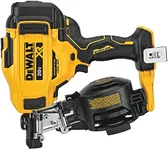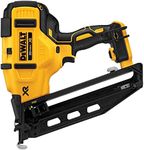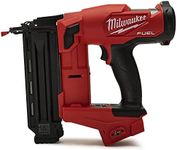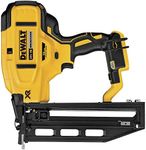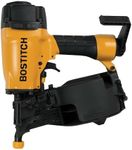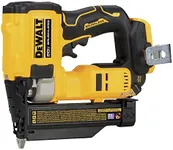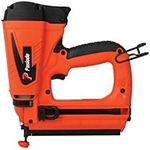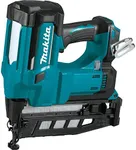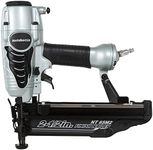Buying Guide for the Best Nail Guns
Choosing the right nail gun can make your woodworking, construction, or DIY projects much easier and more efficient. Nail guns come in various types and sizes, each designed for specific tasks. Before buying, think about the kind of projects you plan to tackle, how often you'll use the tool, and your comfort with handling power tools. Understanding the key specifications will help you select a nail gun that matches your needs and ensures safety and effectiveness.Type (Framing, Finish, Brad, Staple, Roofing, etc.)The type of nail gun refers to the specific job it is designed for. Framing nailers are for heavy-duty tasks like building walls or decks, finish nailers are for trim and molding, brad nailers are for delicate work like small trim or crafts, staple guns are for upholstery or insulation, and roofing nailers are for attaching shingles. Choosing the right type depends on your main project needs—if you’re doing large construction, a framing nailer is best, while for smaller, detailed work, a brad or finish nailer is more suitable.
Power Source (Pneumatic, Cordless, Electric)Nail guns can be powered by compressed air (pneumatic), batteries (cordless), or electricity (corded electric). Pneumatic nailers are powerful and reliable for continuous use but require an air compressor. Cordless models offer portability and convenience without cords or hoses, making them great for quick jobs or working in tight spaces. Electric nailers are easy to use and maintain but may not be as powerful as pneumatic ones. Your choice should depend on where you’ll use the tool and whether you need portability or maximum power.
Nail Size and GaugeNail size and gauge refer to the length and thickness of nails the gun can handle. Larger, thicker nails (lower gauge numbers) are used for heavy-duty tasks, while smaller, thinner nails (higher gauge numbers) are for delicate work. Most nail guns are designed for a specific range of nail sizes. Consider the materials you’ll be working with—thicker wood or structural work needs larger nails, while fine trim or craft projects require smaller nails.
Magazine CapacityMagazine capacity is the number of nails the gun can hold before needing a reload. Higher capacity means fewer interruptions, which is useful for big projects. For occasional or small jobs, a lower capacity may be sufficient. Think about how often you want to stop and reload—if you’re working on large surfaces or long tasks, a higher capacity will save time.
Firing Modes (Sequential, Bump/Contact)Firing modes determine how the nail gun shoots nails. Sequential mode requires you to press the nose against the surface and then pull the trigger, which is safer and more controlled. Bump or contact mode allows you to hold the trigger and fire nails by bumping the nose against the surface, which is faster but can be less precise. If you’re new to nail guns or value safety, sequential mode is best. For experienced users working on large projects, bump mode can speed things up.
Weight and ErgonomicsThe weight and design of the nail gun affect how comfortable it is to use, especially for long periods. Lighter models are easier to handle and reduce fatigue, while heavier ones may offer more stability for tough jobs. Ergonomic grips and balanced designs make the tool easier to control. If you expect to use the nail gun for extended periods or in awkward positions, prioritize comfort and weight.
Depth AdjustmentDepth adjustment lets you control how deep the nail is driven into the material. This is important for different materials and finishes—too deep can damage the surface, too shallow may not hold properly. Look for easy-to-use depth controls if you plan to work with a variety of materials or need a clean finish.



